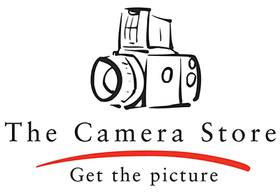If you’re looking for another photographic project, DP Review’s latest Youtube video with renowned photographer, Don Komarechka, should be next on your list. If you know who Don is, you’ll already know that this is a macro project, but shaking things up, this is abstract photos with polarized crystals! With just a few household items, some patience, and a steady hand, you can take beautiful, colourful, abstract images all from the comfort of home! Then, once our world is healthy again, we will have Don back in Calgary to teach some more amazing macro workshops in person!

The first step to stunning crystal photos is, of course, making the crystals! The first item you’ll need is glass. Now, unless you just so happen to be a scientist with microscope slides lying around your house, you’ll need a flat sheet of glass. The glass from a picture frame would work perfectly!
Next, you’ll need a container or jar, to mix up the solution to make the crystals from. Once you have that, you can start experimenting by mixing different acid powders in a 1:1 ratio of water and rubbing alcohol. To make this clear and safe (we don’t need anyone creating some evil science experiment) here is a simple breakdown on what to do!

-
Pour Isopropyl Rubbing Alcohol and water into your container/jar
- The amounts don’t matter, they just need to be equal parts, with enough room to shake your container to mix everything – Ex. 1/8th cup rubbing alcohol and 1/8th cup water
-
Add your acid of choice
- Don lists a few different kinds that make different crystalline structures including Citric Acid and Sulfamic Acid
- DISCLAIMER: I’m no scientist, but mixing different acids together can cause them to react in certain cases, so for the safety of everyone, stick to one at a time
- Mix it all together!
- Once again, the amount doesn’t really matter, you’ll just want enough acid to fully saturate the mixture. You’ll know you’ve reached that point when after about 15 minutes of shaking your container, there is still some acid powder at the bottom. If it does all dissolve, you can add more until you know it’s saturated.
Now that your solution is ready, you can put it on your glass! You can use an eyedropper, spoon, or whatever is easiest to get the solution on the glass. Once it’s on, you’ll want to leave it overnight to let the solution dry and the crystals to form.

Next day… You have crystals! Now it’s time to set up your camera. For those of you who have lots of gear, or want a bigger project, Don does list a more elaborate setup in the video, but for simplicity sake, here is his basic setup. All you’ll need is an LED flashlight, two polarizing filters, your crop sensor camera and a macro lens.

You’ll want the flashlight on a table facing up to the ceiling, with the two polarizing filters sandwiching the crystals just above it. From there you will rest your hand on the edge of the top filter to balance yourself as you shoot. You’ll want to shoot continuously so that you have a better chance of getting that perfectly in focus shot! After that, the rest is up to you, let your creativity flow!

To see Don explain it all himself, check out DP Review’s video below!
Featured in this blog:





